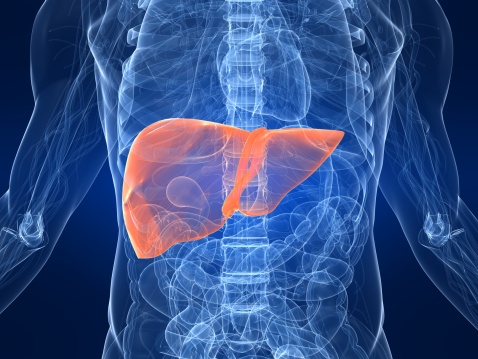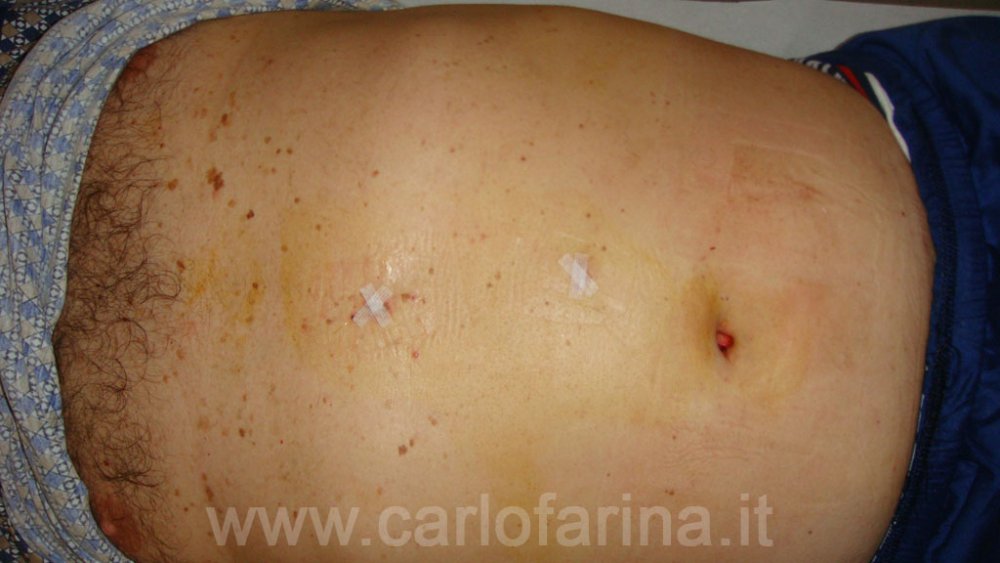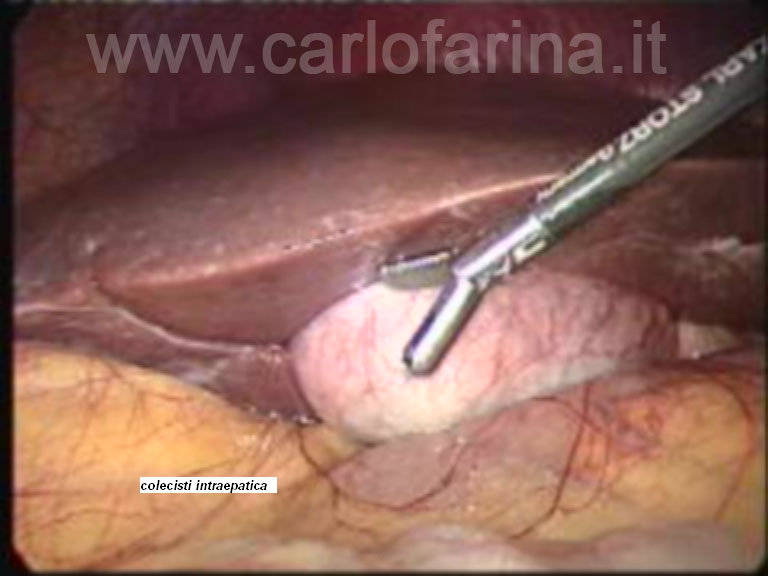Gallbladder gallstones or gallbladder lithiasis is a disease affecting 18% of the population.
INDEX: 1. CHOLESCISTITIES GALLBLADER 2. SURGICAL TECHNIQUES 2.1. LAPAROSCOPIC CHOLESCISTITIES 2.2. LAPAROSCOPIC CHOLECISTECTOMY WITH SILS or LESS TECHNIQUE 3. GENERAL INFORMATION FOR PATIENT AFTER LAPAROSCOPIC CHOLECISTECTOMY 1. CHOLECISTITIES GALLBLADER Not everyone needs to be operated. I relieve the gallbladder mainly of subjects who have had abdominal pain or colic. The same goes for young people (the persistence of calculus in the gallbladder for many years is by many considered to be a predisposing factor for gallbladder cancer) or that they have many small calculations that are associated with most likely complications. The presence of gallbladder polyps makes it necessary to intervene. There are some drugs that can reduce some types of gallbladder calculations. At their suspension, the calculations are reformed in less than a year. 2. SURGICAL TECHNIQUES: 2.1 LAPAROSCOPIC CHOLECISTITY The surgery of Laparoscopic CHolicistectomy or Videolaparocolecistectomy is in line with the traditional one, only performed through incisions of a few mm while the operating space is obtained by "inflating the abdomen" (pnemoperitoneo) with a gas the carbon dioxide. They isolate the cystic duct (a small "tubicin" that joins the gallbladder with an important duct that leads the biliary bile to the intestine and the cystic artery (which provides gallbladder blood). These two important structures are being cut off after closing them between "clips". Then the gallbladder (which appears as a pear-shaped bag) is removed from the liver where it is housed in a "bed" the liver bed. The gallbladder with all its contents is then introduced into a plastic bag and extracted from umbilical incision. If the calculations are too bulky to be extracted, they are first crushed and then extracted. The wounds are closed only with cerotines (there are no visible spots on the skin. The work after a few hours feeds, rises and resets the next day. You should not be afraid to be "abandoned by the surgeon". I will give the operatives a postoperative instructions sheet where it is also required to call each day for at least three days to one of the surgeons of the operating team to report on its status. 2.2. LAPAROSCOPIC CHOLECISTECTOMY with SILS or LESS technique with ONE OMBELIC ACCESS It's a type of recent development I've been running for about 2 years, revolutionary in its kind. It is a laparoscopic cholecystectomy that is performed through a single umbilical access with special articulated or curved instruments. The advantage is predominantly aesthetic, but an additional reduction in post-operative pain has also been evaluated. 3. GENERAL INFORMATION FOR THE PATIENT AFTER LAPAROSCOPIC CHOLICISTECTOMY by Dr. Carlo Farina The surgery was performed in general anesthesia, using 3 or 4 microincisions of 0.5 or 1 cm in the abdomen, one of which was on the navel level. The microferits are enclosed with internal points that spontaneously re-absorb (there are no spots on the skin) and are protected by waterproof patches that allow them to shower from the third postoperative day. Usually the hospitalization is 24-48 hours after which you can go home, accompanied. To drive, it is advisable to wait 4-5 days (important for medical-legal issues in case of street litigation for insurance reimbursement!) During the postoperative period, regular life can be achieved. For the first 2 to 3 weeks, some report an asthma (feeling of weakness) and abdominal swelling, which disappear spontaneously. Do not make any effort and sport all this time. It should be lighter, drink at least 2 liters of liquid per day by eliminating alcohol, until regularization of the intestinal function. You may possibly use a microclip or a supposedly laxative after the second day. After this period you will no longer have to follow specific diets. The patient may, but not necessarily observe one of the following situations: • Pain, of a modest extent, both at the level of the wounds, especially the umbilicus, and at the level of the gallbladder area (right below the costum). They diminish intensity and disappear in about seven days; The tolerance and the threshold of pain vary considerably from patient to patient, so we still administer a fixed dose and painkillers basis that make the postoperative period as normal as possible. • Vulnerable pain in the shoulders, especially the right side, which are reduced from lying down and accentuate with the change of position, with a feeling of not being able to breathe too deep. It is a reflection of diaphragm relaxation, typical of laparoscopic interventions. In some cases it can be very intense for the first few days, then it will decrease until it disappears in 5-7 days. It appears in about 15% of cases and requires a greater dose of painkillers. • A few drops of blood on medication. • Fever: up to 38 ° C without tremors or chills. It is the normal reaction of the body to the operating stress, and disappears in 3-5 days. • Rarely, some patients report an increase in daily evacuations up to a real diarrhea that may last from one week to a month. It happens predominantly to subjects where the gallbladder still had a modest tank function. It will have to be treated with appropriate medications. For any further information or, if necessary, we will be available at our contact details, provided that during the first three days of the intervention you will have to phone between 19.00 and 20.00 for one of your surgeons in your operating team to report on its status (Possibly leave a message in the answering machine).



